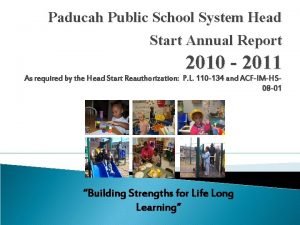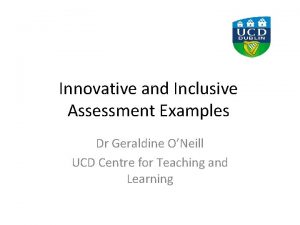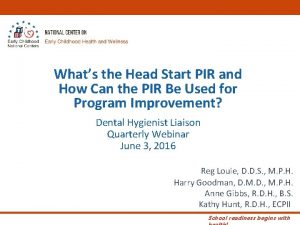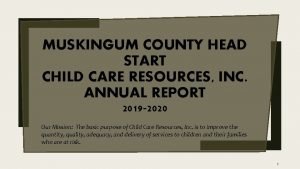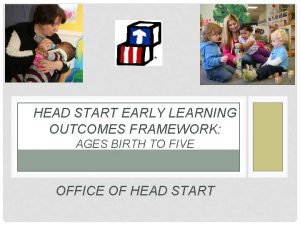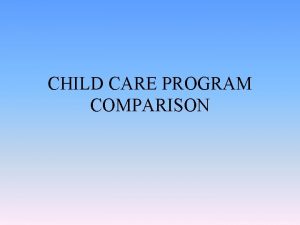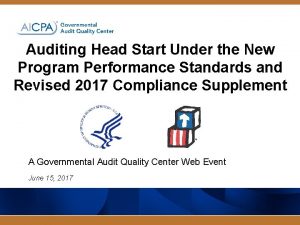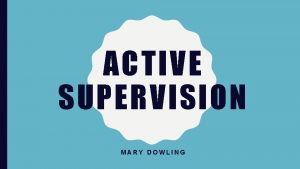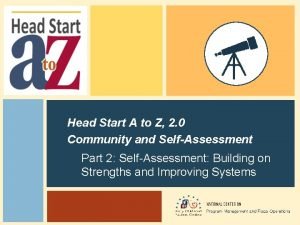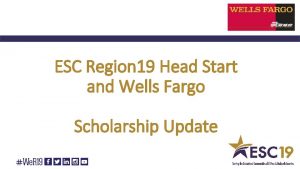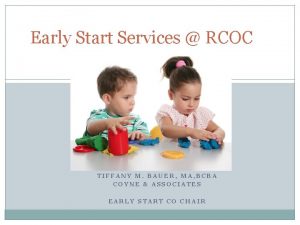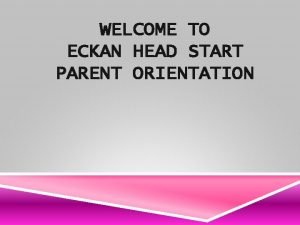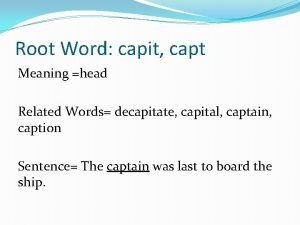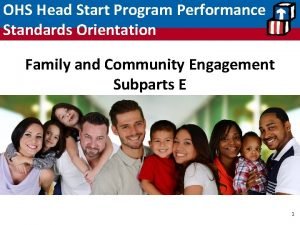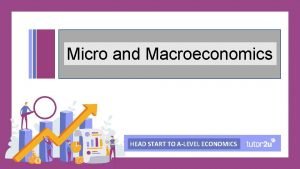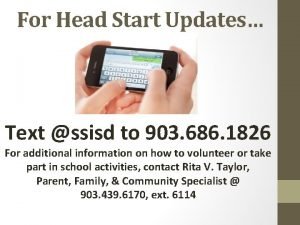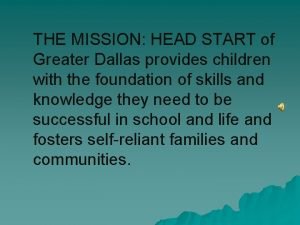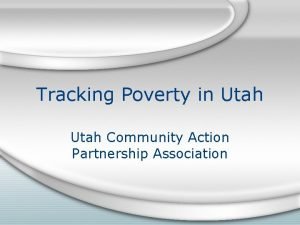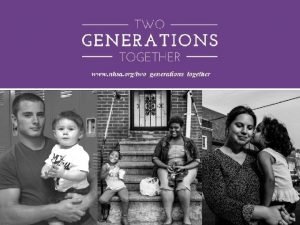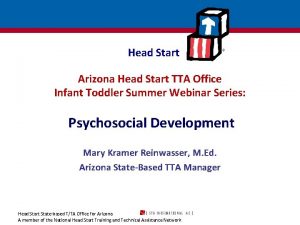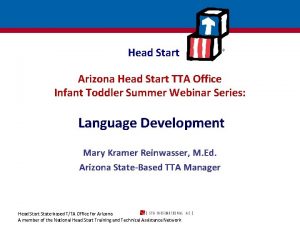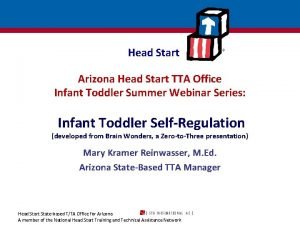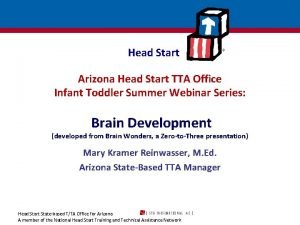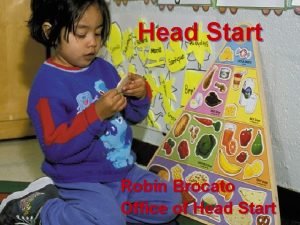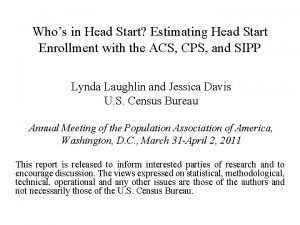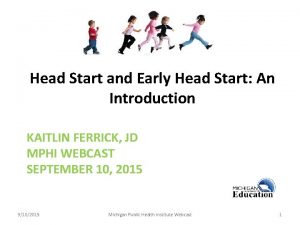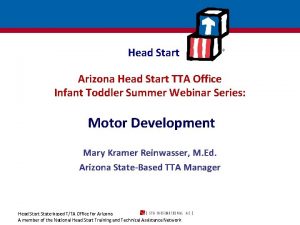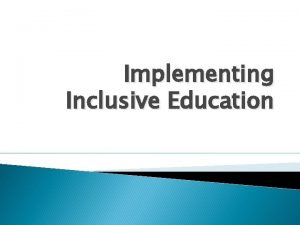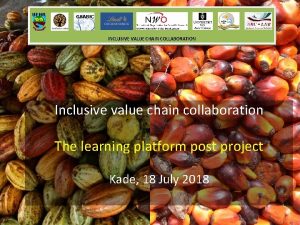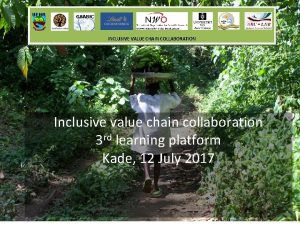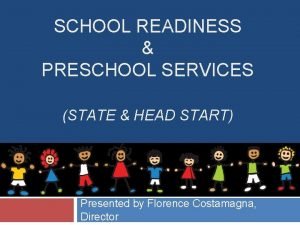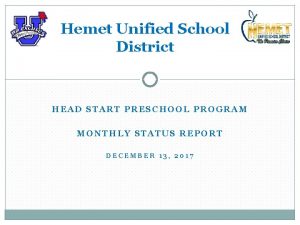Assessment of Inclusive Practices of Head Start Preschool




















- Slides: 20

Assessment of Inclusive Practices of Head Start Preschool Classrooms Ifthika “Shine” Nissar, M. A. California State University San Bernardino EDUC 780

Preschool 101 • How old is a preschooler? • Name three types of preschool programs? HS, CSPP, Private • What is the teacher: student ratio in a preschool classroom in CA according to Community Care Licensing? • What is the average cost of preschool for a month? • What is preschool inclusion? • Name three types of assessments completed in preschool classrooms? Educational Assessments – i. e. DRDP Environmental Assessments – i. e. ECERS Assessment of preschool Inclusion – ICP

Overview of the Research Study • Describe and analyze inclusive practices of Head Start (HS) preschool programs. • Address a problem of practice that has not been addressed in HS preschool classrooms. • Why is this a problem? • Why am I interested in this research study? • Who will benefit as a result of this study?

Purpose of the Research Study • Discuss the importance of assessing the quality of inclusive practices in Head Start classrooms • Review current literature • Contribute to the current body of literature • Make recommendations to improve current practices

Purpose Statement • The purpose of the research study is to assess current inclusive practices (Muccio, 2012; Soukakou, 2012) of Head Start preschool classrooms, improve access of the preschool curriculum and to improve student performance of students with special needs in the Inland Empire.

Research Methodology, Design and Tools Mixed method study Answers for the qualitative research paradigm will be obtained by using the case study (interviews and observations)research design (Creswel, 2012). Answers for the quantitative research paradigm will be obtained by using the Inclusive Classroom Profile (Soukakou, 2012)

Research Questions – Qualitative R. • 1. How do Head Start preschool teachers define, describe and explain inclusive practices (including children with special needs with typical peers) in their daily interactions with students? • 1. How do Head Start preschool directors define, describe and explain inclusive practices (including children with special needs with typical peers) in their daily interactions with students?

Research Question – Quantitative R. • How have inclusive practices within Head Start classrooms impacted student performance for student with and without special needs? • Hypothesis: High quality inclusive practices have a positive impact on student performance for student with and without special needs. • Null Hypothesis: The quality of inclusive practices does not have an impact on student performance for student with and without special needs. • Independent Variable: Inclusion in Head Start as measures by the Inclusive Classroom Profile (ICP) • Dependent Variable(s): Student performance/outcomes as measured by the Desired Results Development Profile (Fall and Spring semesters)

Literature Review I. Historical Context of the Problem – Importance of High Quality Early Childhood Education II. Birth of the Head Start Preschool Program III. Head Start Curriculum IV. Including Children with Special Needs in Head Start Classrooms and Inclusive Practices V. Inclusive Practices in Early Childhood Education VI. Assessing the Quality of Head Start Preschool Inclusive Practices Using the Inclusive Classroom Profile (ICP)

Historical Context of the Problem – Importance of High Quality Early Childhood Education • Since the 1950’s significant educational legislation has been the cornerstone of innumerable debates and concerns regarding the critical importance of education. • Today, the Obama administration has focused on the “Race to the Top” (RTT) initiative. Providing high quality early childhood education for preschool children is part of this initiative. • children who attend high quality preschool programs have an overall advantage on social, emotional, cognitive, and school readiness skills when compared to students who did not attend a preschool program(Cannon & Karoly, 2007; Schweinhart et al. , 2005; Reynold, 2001)

Birth of the Head Start Preschool Program • Head Start is a federally funded comprehensive early childhood education program which was born in May 1965 (Allen & Cowdery, 2009; Cook et al. , 2012). • The inception of the Head Start program was intended to assist children to overcome setbacks or obstacles caused by poverty. The Johnson administration was responsible for the passage of Title I federal funding (Maldonado & Winick, 2006; Schmit & Ewen, 2012) which enabled the Head Start program. • The Elementary and Secondary Education Act (ESEA) • (Zigler & Styfco, 1995) - awareness of serious inequities and achievement gaps • According to Sinclair, (1993) Head Starts focus was to provide a comprehensive education for children living in poverty for one year before they enter kindergarten.

Head Start Curriculum • The Head Start curriculum focuses on the whole child • Providing a high quality preschool education for all children while preparing them with school readiness skills with academic and social emotional are utmost important to the Head Start program (Hodskins, 1975; Schmit & Ewen, 2012). • Family engagement in the classroom, policy, leadership and Collaboration (Bailey et al. , 2006)

Including Children with Special Needs in HS Start Classrooms and Inclusive Practices • Head Start preschool program is the largest provider of inclusive services for children with special needs (Muccio et al. , 2014). • In 1972, Public Law P. L 92 -424 mandated that 10% of the total children enrolled in Head Start programs reserved to serve children with special needs and their families (Allen & Cowdery, 2009).

Inclusive Practices in Early Childhood Education • According to Hodskins, (1975) during the early years the number of students with special needs enrolled in early childhood education classrooms were low. • The number of children with special needs in mainstream educational settings has tremendously increased in the last thirty years (Allen & Cowdery, 2009). • This increase is due to laws and legislation being implemented to support students and individuals with special needs and their rights. • Council for Exceptional Children (CEC), teachers, power of citizens, and Brown vs. Board of Education of 1954 are to be credited for the support with integration and inclusion of students with special needs (Cook et al. , 2012). • Joint statement developed by the National Association for the Education of Young Children (NAEYC) and the Division of Early Childhood (DEC) of inclusive practices in early childhood education programs: Access, Participation and Support (sandall et al. , 2006).

Inclusive Classroom Profile (ICP) • http: //pdc. fpg. unc. edu/using-inclusive-classroom-profile-proficiency • • • 1. Adaptations of space and materials/equipment 2. Adult involvement in peer interactions 3. Adults’ guidance of children’s play 4. Conflict resolution 5. Membership 6. Relationships between adults and children 7. Support for communication 8. Adaptation of group activities 9. Transitions between activities 10. Feedback 11. Family-professional partnerships 12. Monitoring children’s learning

Inclusive Classroom Profile (ICP) • In a qualitative study, the ICP was used to study the Head Start Instructional Professionals’ Inclusion Perception and Practices by Muccio et al. , (2014). The findings revealed that the available professional development supports were less than the need of the inclusive practices. • In a mixed study, the ICP was utilized to collect quantitative data about the inclusive practices of forty Head Start preschool classrooms. • The results revealed that the assessment tool was effective in measuring the inclusive practices, access, participation and supports for the children with special needs in Head Start classrooms. The highest scores were obtained in instructional practices in large groups and the lowest scores were obtained in instructional practices in small groups (Muccio, 2012).

Conclusion • Every child needs a high quality education… • Education is a right and not a privilege • Since HS has many other mandates, recommendations will be made to mandate inclusive practices since HS is the largest provider of preschool inclusion. • Family engagement is key increasing student success in Higher Education. • Everyone benefits from inclusion. • Use of the ICP as a best practice will improve access of the Head Start curriculum and improve student performance of students with special needs in the Inland Empire. • Preschool Inclusion https: //www. youtube. com/watch? v=y 3 R 24 In. D 97 c

References Allen, K. E. , & Cowdery, G. E. (2009). The exceptional child: inclusion in early childhood education (7 th edition. ). Belmont, CA: Cengage Learning. Bailey, D. B. , Bruder, M. B. , Hebbeler, K. , Carta, J. , Defosset, M. , Greenwood, C. , Barton, L. (2006). Recommended outcomes for families of young children with disabilities. Journal of Early Intervention, 28(4), 227– 251. Cannon, J. , & Karoly, L. A. (2007). Who is ahead and who is behind? Product Page. Retrieved May 27, 2014, from http: //www. rand. org/pubs/technical_reports/TR 537. html Creswell, J. W. (2012). Qualitative inquiry and research design: choosing among five approaches (3 rd edition. ). Los Angeles: SAGE Publications, Inc. Cook, R. , E. , Klien, D. M. , & Chen, D. (2012). Adapting early childhood curricula for children with special needs (8 th edition. ). Upper Saddle River, NJ: Pearson. Hodskins, D. (1975). Guide to recruitment: A manual for Head Start personnel in recruiting handicapped children. Washington D. C: U. S. Department of Health, Education, and Welfare. Retrieved May 2, 2014, from http: //eric. ed. gov/? id=ED 136499

References Muccio, L. S. (2012). Head Start instructional professionals’ perceptions and practices: facilitators and barriers for including young children with disabilities (Doctoral Dissertation). Retrieved from http: //search. proquest. com. libproxy. lib. csusb. edu/ Muccio, L. S. , Kidd, J. K. , White, C. S. , & Burns, M. S. (2014). Head Start instructional professionals’ inclusion perceptions and practices. Topics in Early Childhood Special Education, 34(1), 40– 48. Odom, S. L. , Buysse, V. , & Soukakou, E. (2011). Inclusion for young children with disabilities: A quarter century of research perspectives. Journal of Early Intervention, 33(4), 344– 356. Perkins-Gough, D. (2007). Giving Intervention a Head Start: A Conversation with Edward Zigler. Educational Leadership, 65(2), 8 -14. Reynolds, A. J. , Temple, J. A. , Robertson, D. L. , & Mann, E. A. (2001). Age 21 cost–benefit analysis of the Title I Chicago child–parent center program. Executive summary. June 2001. In report presented at the Annual Meeting of the Society for Prevention Research in Washington, DC.

References Sandall, S. , Hemmeter, M. L. , Smith, S. J. , & Mc. Lean, M. E. (2006). DEC recommended practices: A comprehensive guide for practical application in early intervention/early childhood special education. Missoula, MT: Division of Early Childhood (DEC). Schmit, S. , & Ewen, D. (2012). Putting children and families first: Head Start programs in 2010. Brief No. 10: Washington D. C. , Center for Law and Social Policy. Schweinhart, L. J. , Montie, J. , Xiang, Z. , Barnett, W. S. , Belfield, C. R. , & Nores, M. (2005). Lifetime effects: The High/Scope Perry preschool study through age 40. Retrieved from http: //works. bepress. com/william_barnett/3 Sinclair, E. (1993). Early identification of preschoolers with Special needs in Head Start. Topics in Early Childhood Special Education, 13(2), 184– 201. Soukakou, E. P. (2012). Measuring quality in inclusive preschool classrooms: Development and validation of the Inclusive Classroom Profile (ICP). Early Childhood Research Quarterly, 27(3), 478– 488. doi: 10. 1016/j. ecresq. 2011. 12. 003 Zigler, E. , & Styfco, S. J. (1995). Head Start and beyond: A national plan for extended childhood intervention. Yale University Press. Pictures were obtained from the www
 Paducah head start preschool
Paducah head start preschool Innovative assessment examples
Innovative assessment examples It's gotta start somewhere it's gotta start sometime
It's gotta start somewhere it's gotta start sometime Start triage system
Start triage system Head start pir
Head start pir Muskingum county head start
Muskingum county head start Head start early learning outcomes framework
Head start early learning outcomes framework Pros and cons of child care centers
Pros and cons of child care centers Gaqc alert 429
Gaqc alert 429 Head start active supervision poster
Head start active supervision poster Head start management wheel
Head start management wheel Esc19hs
Esc19hs Bauer head start
Bauer head start Eckan head start
Eckan head start Ali root word
Ali root word Head start performance standards 1302
Head start performance standards 1302 Head start to a level economics
Head start to a level economics Head start blocks image
Head start blocks image Head start of greater dallas
Head start of greater dallas Utah community action head start
Utah community action head start Iswa head start
Iswa head start
